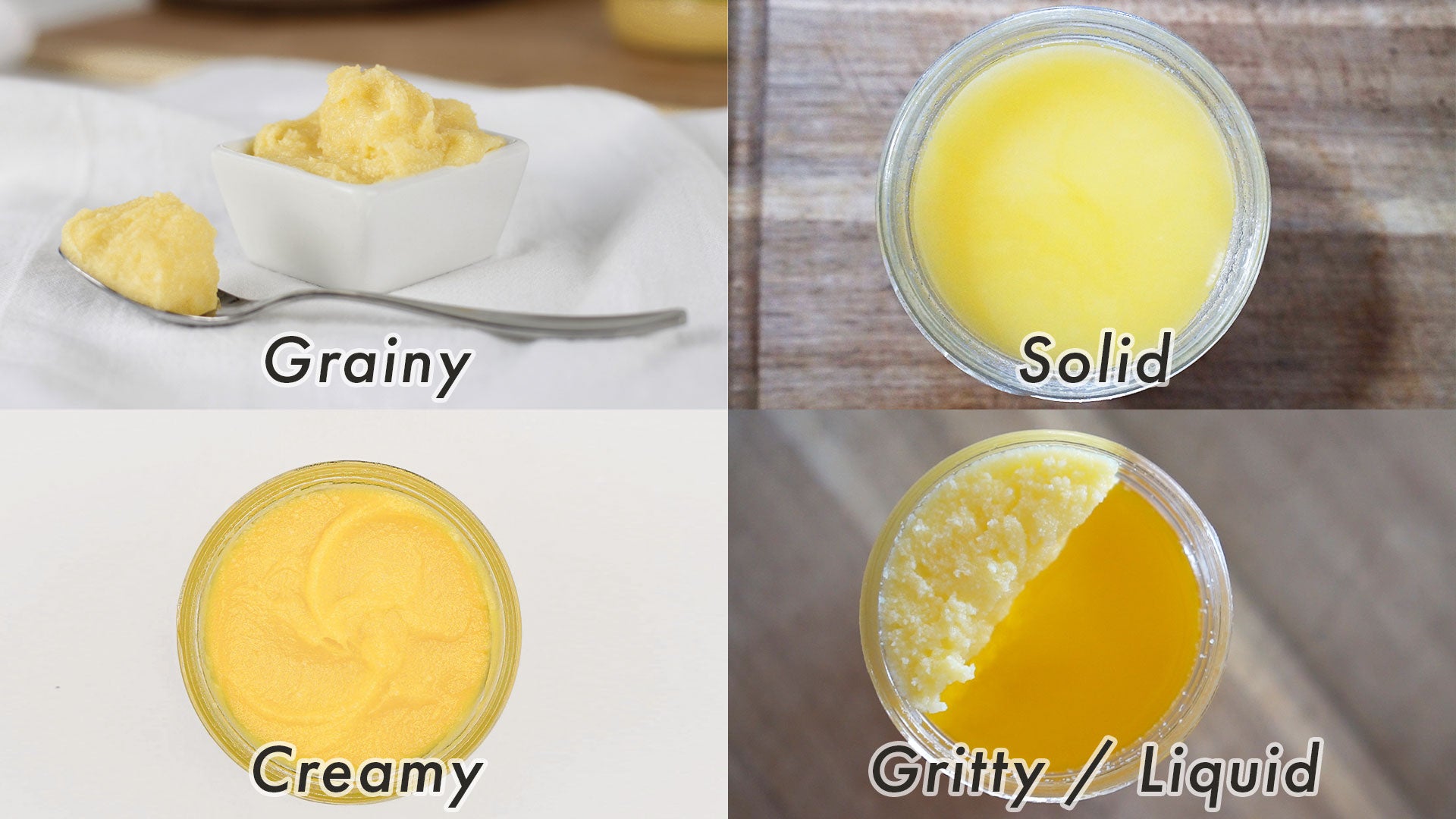
Ghee contains many fatty acids with different melting points, which allows it to exist at many different textures, even at the same temperature. Grainy/Gritty, Solid, Creamy, and Liquid are all normal textures of traditionally made ghee.

When we make small batches, we pour the ghee into the jars when it is still liquid, close the lids, and then leave the jars to cool on a flat surface. Due to the variety of fatty acids in ghee, ghee that cools more rapidly, becomes more solid texture. Ghee that is cooled more slowly retains a softer or even completely liquid texture. What this means in practice is that the ghee at the edges of a batch are more solid, and the ghee jars in the center are more liquid. This only affects texture, but there is no effect whatsoever on the taste, quality and shelf-life of the ghee.

Ghee is primarily used either as a cooking fat or as a spread on warm foods. In both of these cases, this grainy, runny or separated texture disappears in a matter of seconds. For example, someone who has never seen crystallization of honey in the winter may consider it as a product defect. Upon further investigation, you'll learn that it is perfectly normal.
It is a simple matter to alter the texture of your traditional ghee to something more your preference. We provide a tutorial on how to do this, since many of our customers prefer one texture over another.
How to change the texture of your ghee:
First you will need to melt the ghee. You may do so by removing it from the jar, melting in a small pan and then pouring back in the jar. Alternatively, you can fill a pot with hot water and submerge tightly closed ghee jar in it to melt the ghee. Keep the water level below the lid. The idea is to melt the ghee completely until it is liquid.
To make a solid or creamy ghee--after the ghee is melted, pour it back into the jar, then immediately place the jar in the refrigerator to rapidly cool, and leave overnight. (Do not freeze.)
Take the jar out of the refrigerator the next day and leave it on the counter-top. Depending on the ambient temperature of the room, the ghee may be more solid or more creamy at room temperature.
To make a grainy ghee--instead of refrigeration, cool your ghee more slowly by pouring the ghee back into the jar, placing the jar of melted ghee on the counter top, and covering it with a kitchen towel to cool overnight. The result should be a ghee with a more grainy texture, which you can then close with a lid and leave at room temperature.
